What are the different types ofjointing router cutters? |
||||
 |
||||
|
For ease of use, most jointing router cutters should be used in a router table. |
||||
Dovetail router cutters |
||||
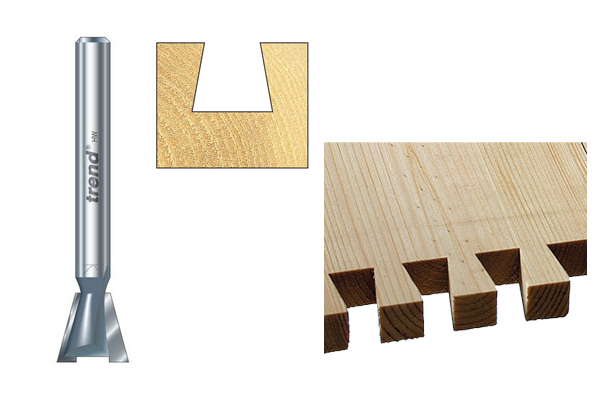 |
Dovetail router cutters have a trapezoidal shape, which resembles a dove’s tail. They are designed to produce dovetail cuts for a range of applications. They are available individually or in sets.
Please note: unlike with other cutters, the dovetail profile must be cut in one pass only, due to the cutter’s shape. |
|||
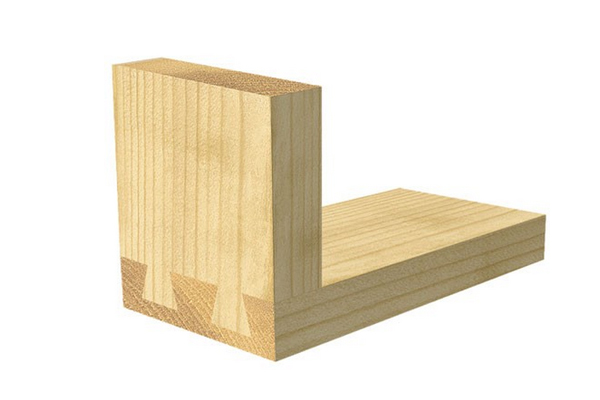 |
Arguably the most common application for these cutters is in the production of dovetail joints.
Unlike some other types of joint-making cutter, dovetail cutters do not come in pairs. This is because a single dovetail cutter is able to cut both the pins and the tails of a dovetail joint. |
|||
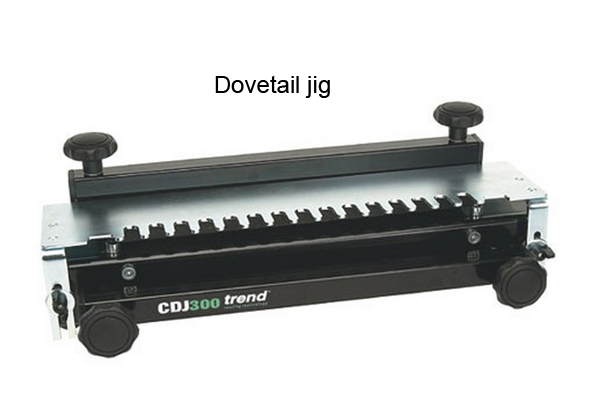 |
When used in conjunction with a dovetail jig, a dovetail cutter can be used to create different types of dovetail joints.
Dovetail router cutters can also cut both parts of a dovetail housing joint, which is often used for cabinets and shelving units, where a very strong bond is needed. |
|||
What are the different types of dovetail joint? |
||||
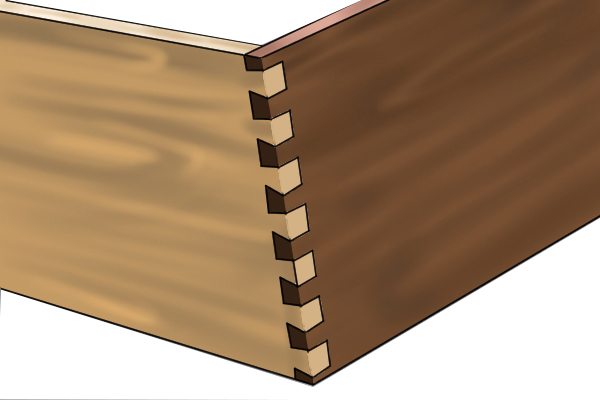 |
Through dovetail jointsA full, through or standard dovetail joint is one where the end grain of both pieces of material is visible when the joint is fully assembled.
This is often seen as the strongest and most beautiful of all the dovetail joints. |
|||
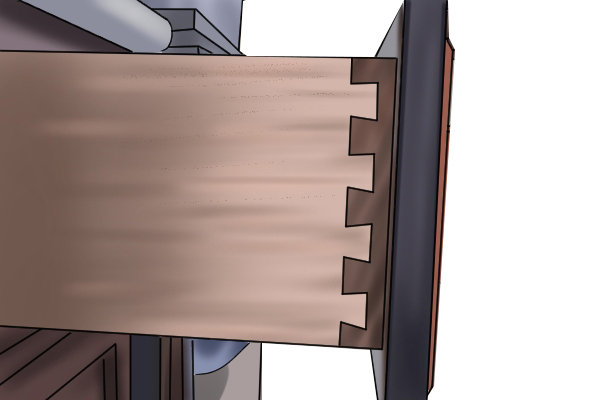 |
Half-blind dovetail jointWith this type of dovetail joint, only a section of the joint is shown. It’s sometimes called a lapped dovetail.
As a result, it is commonly used for applications such as drawers, where the front portion will be on display. |
|||
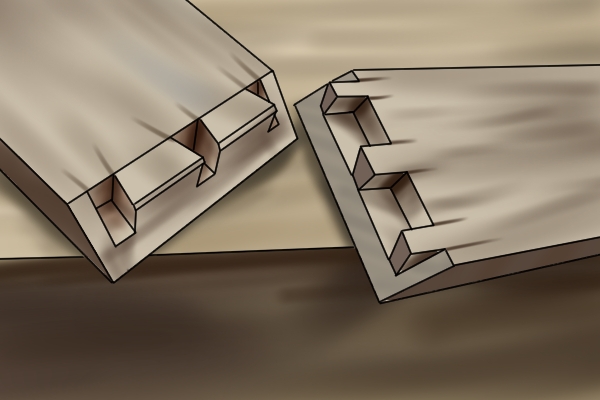 |
Blind dovetail jointsThis joint completely hides both the pins and tails, leaving a single join line. It is often used for box construction. It’s sometimes called a double lapped dovetail.
However, some woodworkers don't use this joint because it hides all the hard work that goes into creating it. |
|||
Butterfly spline router cutters |
||||
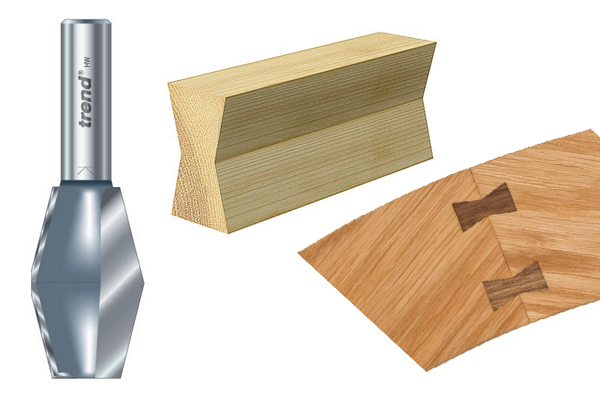 |
Butterfly spline cutters have a diamond-shaped body, and are designed to rout the profiles of butterfly keys, splines and inlays. |
|||
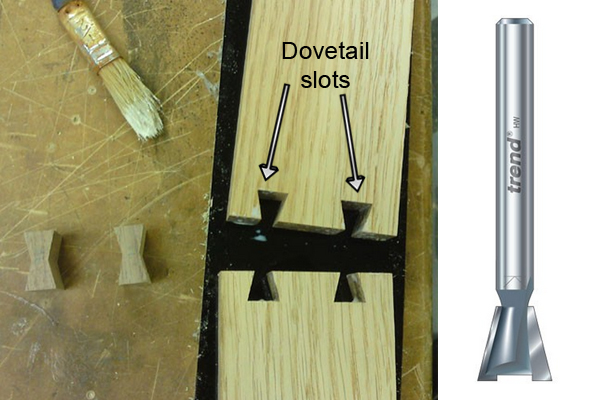 |
They are designed to be used in conjunction with dovetail cutters with the same angle. The width of the butterfly spline will be determined by the dovetail cutter used.
Cutting the butterfly spline is best done on a router table, using the back fence to limit the cutting depth to produce a spline of the same width as the dovetail slots. |
|||
Drawer lock router cutters |
||||
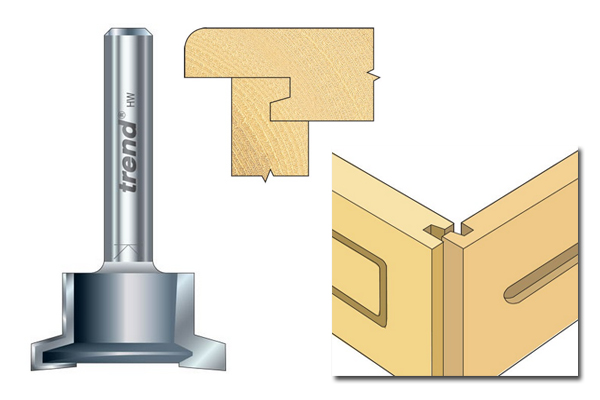 |
Drawer lock cutters are designed to rout both parts of drawer lock joints, which are most commonly used to connect the sides, fronts, and backs of drawers. |
|||
Finger jointing router cutters |
||||
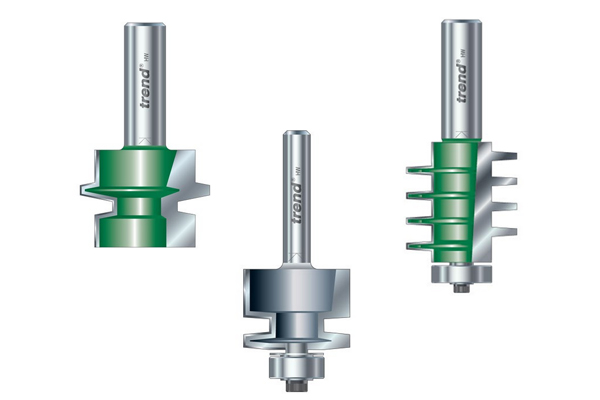 |
Finger jointing cuttersrout the parts for finger joints on the end or edge of boards.
They are often called "reversible offset" cutters, as the profile cut on one side of the joint must be the reverse of the other for them to interlock. |
|||
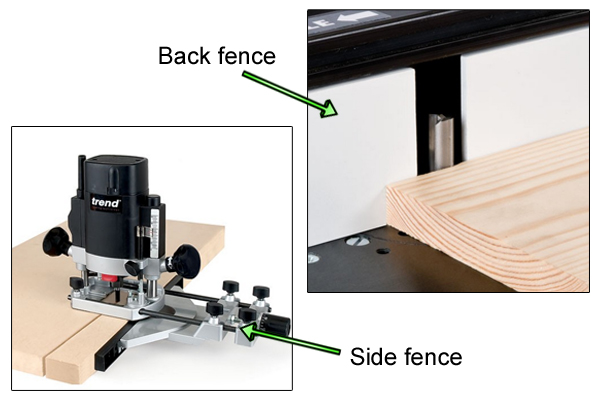 |
Some models come with a ball-bearing guide located beneath the cutting edges, which rides along the edge of the workpiece, keeping the cutter routing to a consistent depth. Others do not have a guide and so require a side fence, back fence, or another device to guide them. |
|||
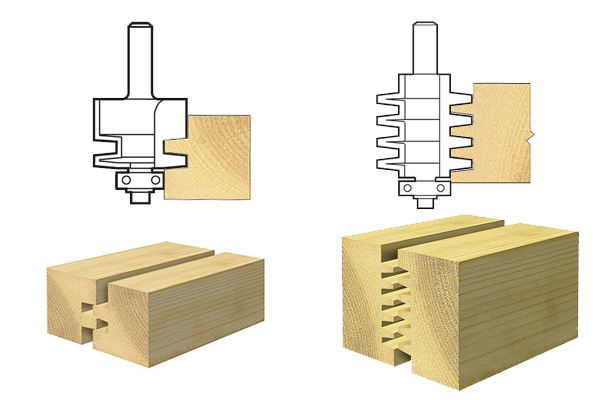 |
Comb jointing router cuttersThere are two main types of finger jointing cutter, those that rout a single finger and those that rout multiple fingers, which are often referred to as comb jointing cutters. Single finger cutters are best suited to thinner materials while comb cutters are chosen for thicker materials that require more fingers to join them. |
|||
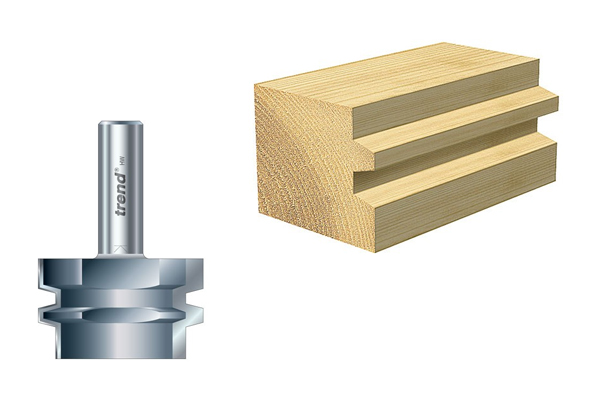 |
Offset tongue and groove router cutterOffset tongue and groovers are similar to finger cutters, but they cut a wider groove. This allows more surface area for glue, making a firmer joint. |
|||
Knuckle joint router cutters |
||||
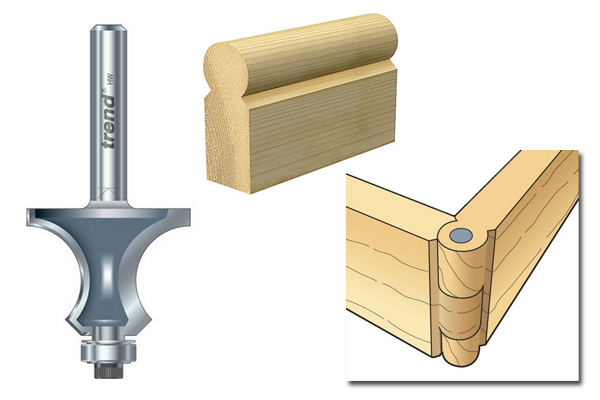 |
These cutters are designed to rout the knuckle part of knuckle joints.
Some hand tools, including a chisel, and fret saw, will be required to complete this type of joint. |
|||
Linenfold router cutters |
||||
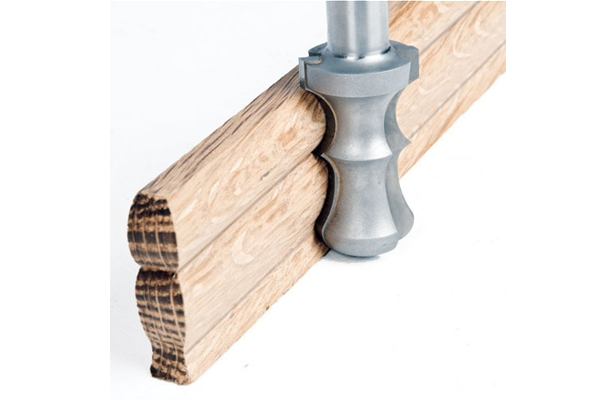 |
A Linenfold cutter produces a characteristic mock linen fold shape that is most often used on panelling and furniture. This cutter can be used to produce a scroll effect on the end of linenfold panels by using a 4mm radius cutter with a shank mounted bearing guide, specifically, the Trend guided channel cutter with ¼” shank. Linenfold cutters include instructions and a scroll template diagram. |
|||
Mitre corner router cutters |
||||
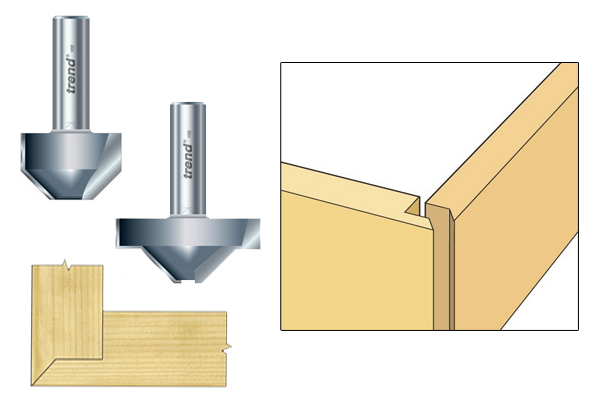 |
These pairs of cutters are designed to make lapped mitre joints, which are commonly used in the production of speakers and columns. |
|||
Mitre lock router cutters |
||||
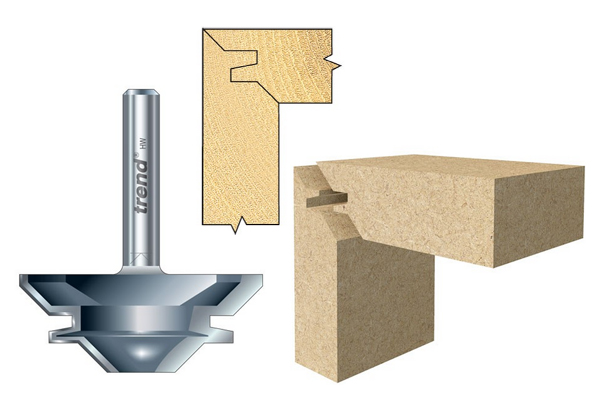 |
Mitre lock cutters are designed to rout both parts of a mitre lock joint. |
|||
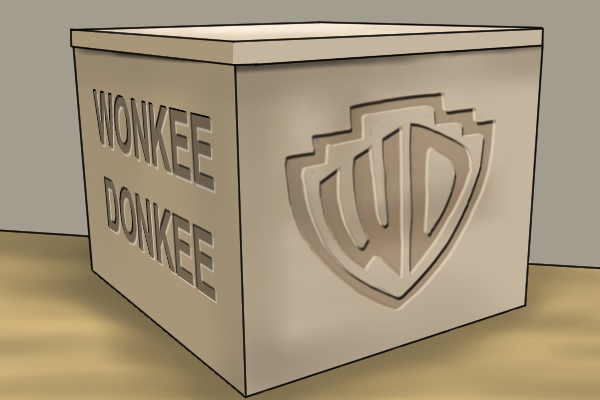 |
Mitre lock joints are very strong, and ideal for producing speaker cabinets, boxes, frames, columns, and posts, or any construction that must withstand movement. |
|||
Staff bead jointers |
||||
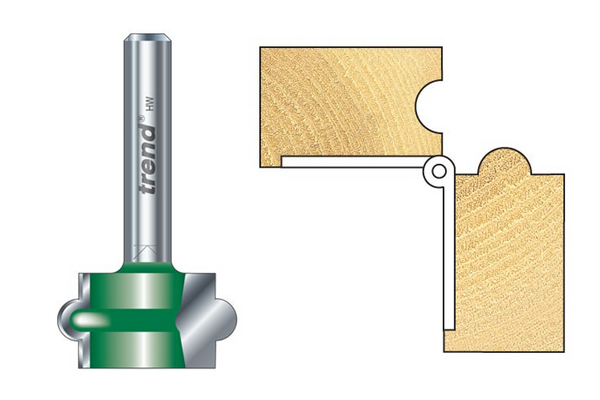 |
These cutters are designed to be used in conjunction with certain staff bead cutters to produce hinge joints, which are commonly used in the construction of display stands. The CraftPro range carries one staff bead jointer and its corresponding staff bead cutter, and the Professional TCT includes an 18mm jointer and corresponding cutter and a 22mm jointer with a corresponding cutter. |
|||
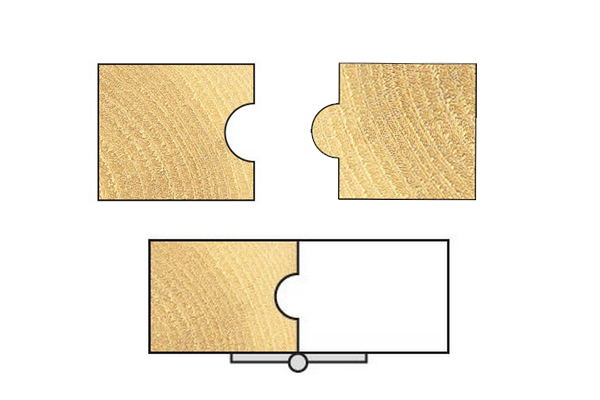 |
The staff bead jointer cuts a semi-circular radius on the edge of material that is designed to accept the protruding curve cut by the staff bead cutter. |
|||
Sunk bead jointers |
||||
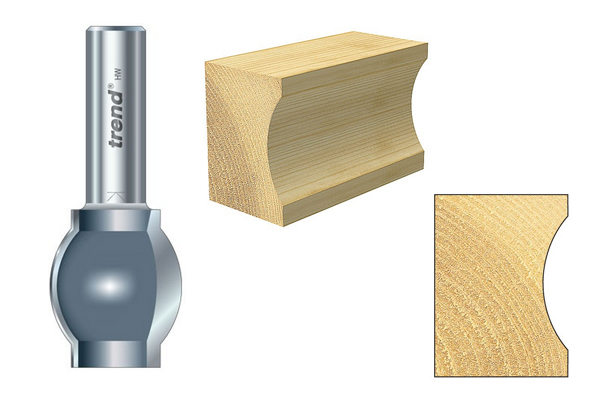 |
This sunk bead cutter is designed to be used in conjunction with a specific hand hole staff bead cutter to make curved screens, doors, barrels, and hot tubs. |
|||
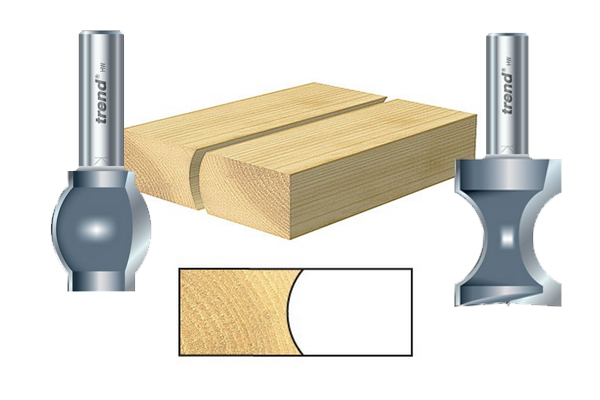 |
The sunk bead jointer cuts a curve on the edge of material that is designed to accept the protruding curve cut by the staff bead cutter. |
|||
 |
||||








![router cutters] jointing cutters](https://www.wonkeedonkeetrend.co.uk/media/wysiwyg/jointer_sets.jpg)

